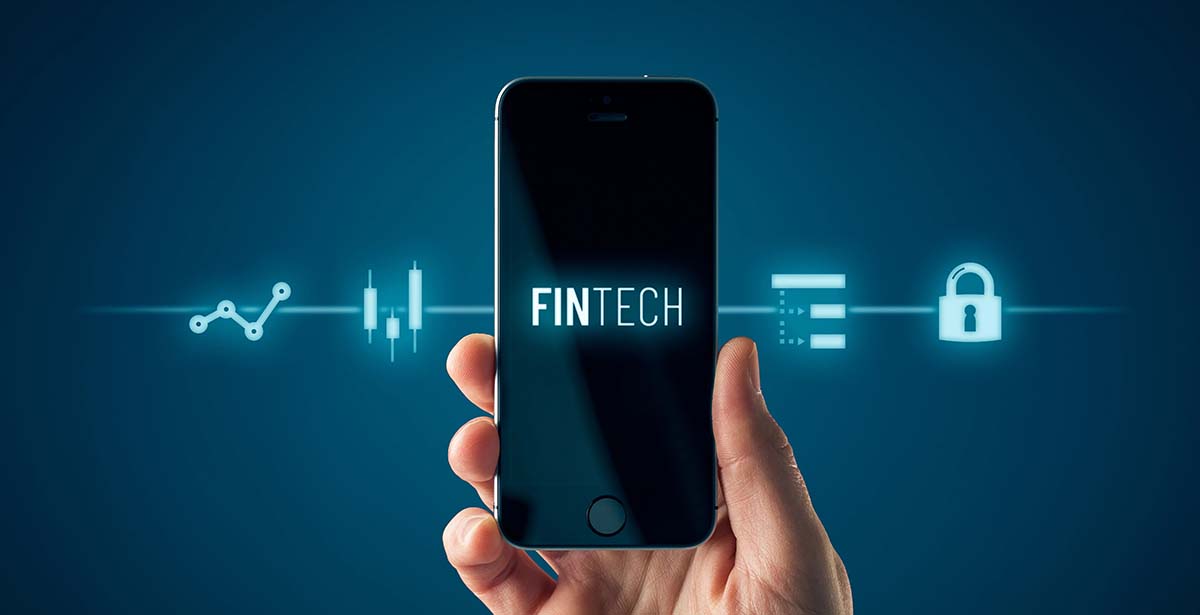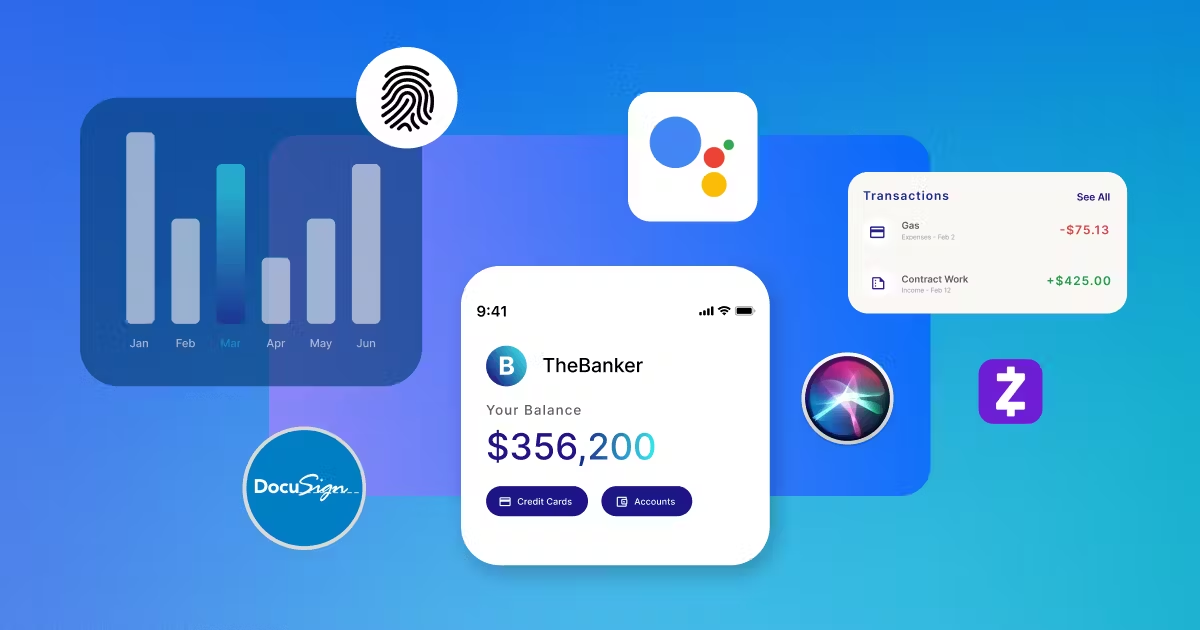What Is A Fintech App? How Does This Use Technology To Enhance Financial Services?
What is a Fintech app? Fintech has revolutionized finance by transforming the way individuals and businesses interact with financial services. Fintech applications, which streamline and enhance various financial transactions, are at the core of this revolution.
Author:Emmanuella SheaReviewer:Frazer PughJan 08, 2024668 Shares30.3K Views

What is a Fintech app? Fintech has revolutionized finance by transforming the way individuals and businesses interact with financial services. Fintech applications, which streamline and enhance various financial transactions, are at the core of this revolution.
These digital tools, ranging from banking to investments, represent a fusion of technology and financial ingenuity. This exploration delves into the essence of fintech applications and their innovation.
What Is A Fintech App?
A Fintech application is a software program that automates and digitizes financial services. Fintech apps are fintech-sector applications that mix finance and technology to increase access to financial services and compete with conventional financial institutions.
Apps, software, or technology that allow digital access, management, or financial transactions are referred to as fintech. It has arisen as a tool to assist customers in addressing financial difficulties and achieving financial objectives during the last decade.
Fintech apps make it easier and more efficient to access and handle funds, and they often provide alternatives to traditional financial systems (such as blockchain and cryptocurrencies).
Fintech has been employed in many different areas of life, including banking, budgeting, investing, and lending. Consumers claim several advantages, such as financial alleviation, time savings, and decreased stress.
Other advantages include simpler financial monitoring, more control, more options, and better financial habits. Fintech firms provide financial services or apps that depend largely on technology.
They are often industry disruptors, altering customer relationships with the financial sector by increasing product availability, cutting prices, and delivering quicker, more customized service. Fintech is often used as a self-identifier rather than a particular title from an industry oversight group.
Although fintech banks are the most well-known examples of fintech organizations, there are various additional fintech sectors to investigate.
Fintech App Types
Here are the diverse types of fintech applications that have reshaped the financial landscape:
- Digital Banking and Neobanks -Embodying the epitome of convenience, these fintech applications redefine banking by offering 24/7 online services. Users can open accounts and secure loans without stepping into a physical branch. Exemplars include Revolut, Chime, and Monzo, epitomizing the digital banking revolution.
- Open Banking Pioneers -Empowering third-party developers, open banking facilitates secure access to clients' bank data, creating an interconnected web of financial services. Plaid stands out as a prime example, allowing users to securely share their data, fostering seamless financial management.
- Insurtech Innovators -Streamlining insurance processes, insurtech employs advanced risk assessment for swift coverage applications and claims processing. Hippo, Steppie, and Lemonade emerge as pioneers, showcasing the transformative potential of technology in the insurance domain.
- Regulatory Technology (Regtech) -In the complex landscape of compliance regulations, regtech emerges as a savior for financial service companies. Examples like ComplyAdvantage specialize in addressing regulatory requirements, from Anti Money Laundering (AML) to Know Your Customer (KYC).
- Peer-to-Peer Lending Platforms -Revolutionizing the lending landscape, these applications facilitate direct connections between lenders and borrowers. Dave and Money Lion exemplify fintech's role in expediting loan processes through peer-to-peer lending.
- Swift Digital Payments -Fintech payment applications redefine the speed and cost-effectiveness of transactions. Powerhouses like Paypal, Venmo, Zelle, and CashApp have become household names, symbolizing the fintech-driven evolution of digital payments.
- Robo-Advisors -Harnessing the power of algorithms, robo-advisors offer financial planning services at a fraction of the cost of traditional human advisors. Wealthfront and M1 Finance exemplify the fusion of technology and financial advisory services.
- Personal Finance Management Pioneers -Consolidating financial portfolios, these apps serve as comprehensive platforms for effective money management. Mint and YNAB lead the charge, empowering users to set goals, track income and expenses, and enhance their financial well-being.
- Cryptocurrency Crusaders -In the dynamic world of cryptocurrencies, fintech applications cater to crypto enthusiasts, providing wallets, payment solutions, exchanges, and trading platforms. These apps redefine the landscape of digital assets.
How Does Fintech App Work?
There are several sorts of fintech applications that operate in various ways. Some fintech applications enable users to follow their investments across various platforms by securely unlocking financial account data (e.g., transactions and account balances) with another app.
Wealth and financial management applications, for example, would combine financial account data from many accounts into one easy-to-read snapshot, displaying all of the user's financial information in one accessible location.
Based on the available data, the same applications may also give recommendations to help users improve their financial situation.
Apps that enable users to trade stocks or cryptocurrency are another kind of fintech. Robinhood and Coinbase are typical fintech examples that enable customers to make a broad range of investments quickly and easily.
To make fintech applications operate, multiple sorts of 'plumbing' are required:
- APIs- Financial APIs (application program interfaces) link users' bank accounts to fintech applications and services in a safe and secure manner, allowing them to exchange financial data, move payments, and verify their identities.
- Mobile apps- Most fintech organizations have a mobile app that allows consumers to access their money and insights at any time. Mobile applications are practically associated with fintech, whether they are a digital banking app, a financial management tool, or an investing platform.
- Web-based solutions- In addition to a mobile app, some (but not all) fintechs provide a web-based solution via which customers may log in via a web browser and execute the same functions as the mobile app.
Fintech has transformed most people's everyday lives by using APIs to securely open financial data and handy mobile applications. Friends and relatives, for example, are more inclined to utilize the Cash App or PayPal to transfer money to one another rather than exchanging cash or cheques in person or over the mail.
Advantages Of Fintech App
In the ever-evolving landscape of financial services, fintech stands tall, driven by distinct advantages that set it apart from its traditional counterparts. The surge in fintech app development can be attributed to a compelling array of benefits, ushering in a new era of financial accessibility and innovation.
Revolutionizing Access
Fintech applications redefine accessibility, breaking free from the shackles of intricate account opening processes. Unlike their traditional counterparts, fintech platforms prioritize user ease.
A simple online signup, coupled with an internet connection, opens the gateway to a spectrum of financial services – encompassing payments, loans, insurance, trading, and more.
Economics Of Efficiency
A cornerstone of fintech's allure lies in its digital essence. Stripped of brick-and-mortar constraints, fintechs navigate a cost-effective path, paving the way for reduced fees for their clientele.
The absence of physical infrastructure translates into a financial landscape where cost reduction becomes a defining trait, setting fintechs on a trajectory of economic efficiency.
Seamless Financial Management
Fintech applications transcend conventional boundaries, empowering users to orchestrate their financial symphony with a mere smartphone or tablet.
This paradigm shift not only saves invaluable time but accelerates financial transactions – be it seamless payments or swift credit approvals. The agility of fintech redefines the tempo of financial operations.
Diverse Financial Universe
Versatility is the hallmark of fintech applications, offering an expansive array of services that traverse the financial cosmos. From digital payments and insurance to investment platforms and personalized financial advisory, fintech apps emerge as multifaceted solutions.
Often encapsulating multiple services within a single application, fintech becomes a one-stop-shop for diverse financial transactions.
Tailored Financial Experiences
Fintech technologies unleash the power of personalization. By adeptly collecting and processing user data, fintech applications curate bespoke financial services aligned with individual goals and capacities.
The marriage of technology and personalization amplifies the user experience, shaping a financial journey uniquely tailored to each individual.
In the dynamic realm of financial technology, the advantages fueling fintech app development transcend the mundane.
They represent a seismic shift towards a future where financial services are not just accessible but are personalized, cost-effective, and seamlessly integrated into the fabric of our digital lives.
Fintech Products
Fintech encompasses a broad variety of use cases in the business-to-business (B2B), business-to-consumer (B2C), and peer-to-peer (P2P) industries. The following are just a few examples of fintech businesses and products that are transforming the financial services sector.
Fintech Banks
Banking services, which are one of the most important components of the financial system, have been shook up by the fintech sector.
Account setup and financing, as well as a decrease in fraudulent sign-ups, are now fast and straightforward owing to technologies such as Plaid's own Auth and Identity Verification, respectively.
In contrast, neobanks like as Varo provide flexible personal checking accounts, high-yield savings accounts, and even secured credit cards—all without the typical fees that might stymie people's financial aspirations.
Digital Payments
Cashless payments have surged since the pandemic, with 41% of Americans reporting all their payments in a week being digital, up from 29% in 2018. Payment applications and services have also gained popularity due to the cost-effectiveness of direct bank transfers and the ease of signing up and validation.
Plaid allows users to link their bank account to apps or services for digital payments over the ACH network, while programs like Wave enable businesses to pay invoices, manage accounting, and send payroll digitally and via ACH.
Plaid Transfer simplifies payments for both ACH and real-time payment rails, while personal financial management (PFM) applications integrate financial information into a single dashboard, helping consumers manage, budget, and make sense of their money.
Copilot, another popular PFM software, uses Plaid to provide clients with a comprehensive view of their financial health and net worth.
Wealth Administration
Fintech technologies enable financial advisers and wealth management platforms to gather held-away account information in order to increase assets under management (AUM) while providing more comprehensive financial advice.
Atom Finance, for example, provides a range of tools and capabilities to enable consumers explore and monitor all of their assets in one spot. Stash is a subscription platform that provides users with quick and cheap access to investing, education, and financial advisory goods.
Fintech Lenders
Due to the amount of labor and time required to gather income information, account balances, and asset histories, lenders often struggle to acquire a complete and accurate picture of their candidates. Furthermore, getting borrowers to link their bank accounts in order to receive and repay loans may be a time-consuming procedure.
Top fintech lenders including as SoFi, Prosper, and SoLo are using technology to alleviate these pain spots in the lending process while also delivering more consumer-friendly loan options. They are assisting customers in avoiding predatory loans and providing them with access to new loan kinds such as peer-to-peer lending.
Plaid also assists borrowers by expediting the loan process and providing lenders with access to user-permissioned bank, payroll, and other data needed to make educated lending choices.
This makes it quick and simple to verify borrowers' identities, assets, employment, and income, as well as authenticate their accounts, check balances in real time, and verify financial commitments.
Embedded Finance
Embedded finance refers to financial services that are smoothly integrated into customers' daily lives via non-financial goods and services. Shopify Balance, for example, offers business checking accounts to Shopify customers to help them get paid quicker and manage their company.
Because Shopify is not a financial institution, Shopify Balance is a financial product 'embedded' in a non-financial offering. Enterprises like Unit and Checkout.com are assisting in making this a reality with API integrations that integrate financial services directly into the product or user experience of non-financial enterprises.
The use of embedded finance has increased in recent years and is anticipated to continue. These services are expected to generate $230 billion in revenue in 2025, a tenfold increase over 2020.
FAQs - What Is A Fintech App?
How Do Fintech Apps Ensure Security Of User Data?
Fintech apps prioritize robust security measures, employing encryption and multi-factor authentication to safeguard user data. Additionally, many adhere to stringent industry compliance standards, fostering trust among users.
Can Fintech Apps Provide Personalized Financial Advice?
Yes, many fintech apps leverage advanced algorithms to analyze user data and offer tailored financial advice. This personalized approach enhances the user experience, helping individuals make informed decisions aligned with their financial goals.
What Sets Fintech Loan Applications Apart From Traditional Lending?
Fintech loan apps stand out due to their peer-to-peer lending model, connecting borrowers directly with lenders. This streamlined approach accelerates the loan process, often providing quicker approvals and competitive interest rates.
Are Fintech Apps Only Limited To Banking Services?
No, fintech apps encompass a broad spectrum of financial services beyond banking. They include insurtech for streamlined insurance processes, robo-advisors for algorithm-driven financial planning, and cryptocurrency apps for managing digital assets.
How Can Fintech Apps Contribute To Financial Inclusion?
Fintech apps contribute to financial inclusion by offering services without the need for physical presence. The accessibility and user-friendly interfaces make financial services available to a broader audience, including those in underserved regions.
Final Words
Fintech has revolutionized finance by transforming the way individuals and businesses interact with financial services. Fintech applications, which streamline and enhance various financial transactions, are at the core of this revolution.
These digital tools, ranging from banking to investments, represent a fusion of technology and financial ingenuity. This exploration delves into the essence of fintech applications and their innovation.

Emmanuella Shea
Author

Frazer Pugh
Reviewer
Latest Articles
Popular Articles
